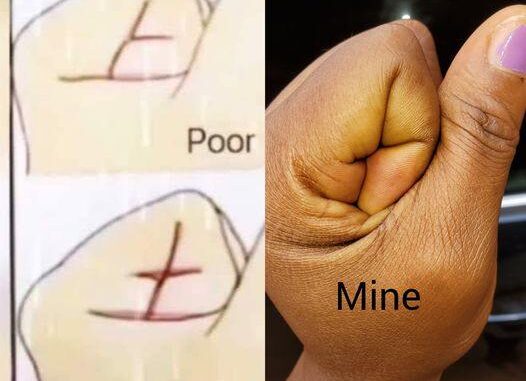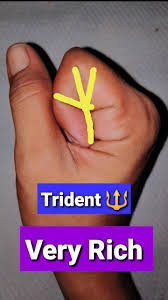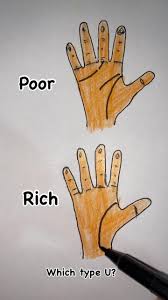
Is your financial fate truly determined by the lines on your hands?
Many people believe that palmistry holds the key to uncovering wealth or poverty, a practice that has fascinated and mystified humans for centuries. But how reliable are these ancient beliefs, and what does palmistry really say about our futures?
From mystics to skeptics, this mystical art has been both revered and challenged. In this article, we’ll explore the intriguing world of palmistry, looking at its cultural significance, interpretations, and the doubts that surround it.
What is Palmistry?
Palmistry, also known as chiromancy, is the age-old practice of analyzing the lines, shapes, and marks on the hands to gain insight into one’s personality or future. This practice has been widely embraced in many cultures, with the belief that specific hand lines can reveal details about one’s wealth, fortune, and other life aspects.
In the image, we see two palms: the upper palm features a closed hand with a crossed line near the thumb, labeled “Poor.” According to this interpretation, certain hand markings may indicate a lack of financial prosperity.
The lower palm, with different crossed lines and a deeper cross, is labeled “Rich.” This configuration is believed to symbolize wealth and success in financial matters.

Cultural Perspectives:
Different cultures and belief systems have offered various interpretations of palm lines. Some traditions claim that specific hand markings, like crosses or intersections of lines, can indicate a person’s fate, including their financial future.
In this context, the image presents the idea that financial destiny is preordained in the lines of one’s hand—an idea rooted in folklore and cultural wisdom.
Skepticism and Modern Views:
Despite its widespread historical appeal, palmistry is largely dismissed by the scientific community. Many modern experts view it as a pseudoscience or entertainment, rather than a reliable method for predicting financial success.

In Conclusion:
While palmistry remains a deeply rooted practice in various cultures, its legitimacy as a tool for predicting wealth or life outcomes is still highly questioned. While it continues to be a part of folk tradition, modern science tends to regard it as more of a pseudoscience or an amusing form of entertainment. Whether seen as an intriguing cultural custom or dismissed as unreliable, palmistry continues to captivate our imagination and offers a unique, unconventional way to explore personality and fate.













